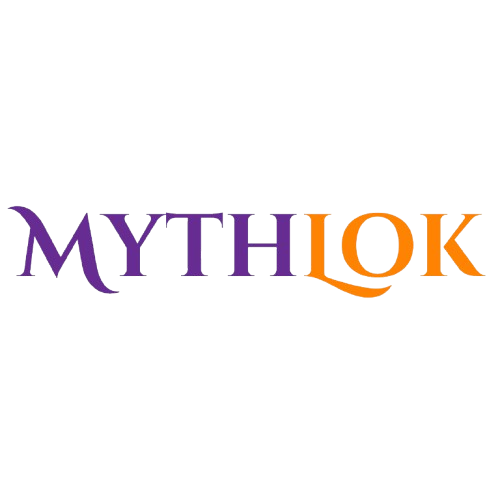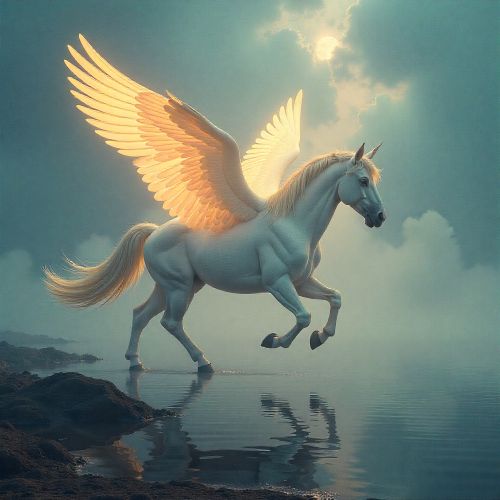Doondari : The Creator God
Listen
At a glance
| Description | |
|---|---|
| Origin | Fulani Mythology |
| Classification | Gods |
| Family Members | N/A |
| Region | Nigeria, Mali, Guinea, Senegal, and Niger |
| Associated With | Creation |
Doondari
Introduction
In African mythologies, Doondari emerges as a central figure in the Fulani creation story. Revered as the supreme being, she is the architect of the universe and the progenitor of humanity. Doondari holds a prominent position within Fulani mythology, a cultural system abundant with symbols and deities that reflect the Fulani people’s deep connection to nature and spirituality. The Fulani, who primarily reside in West and Central Africa, have a deeply rooted tradition of oral storytelling and cultural practices that include reverence for various deities. Doondari embodies themes of nature, fertility, and divine protection. Also known as “the fearless one,” she is credited with creating and shaping the world, with her story encompassing themes of creation, transformation, and overcoming challenges.
Physical Traits
Descriptions of Doondari’s physical form are scarce in traditional Fulani oral narratives, where the focus is often on the deity’s immense power and creative abilities rather than appearance. Some interpretations portray Doondari as a being of immense stature with celestial qualities, as her physical form is often considered beyond human comprehension. Symbols like the sky, sun, and moon are more frequently used to represent her divine essence.
While depictions of Doondari’s appearance vary, she is often seen as a wise and imposing figure, with some accounts describing her as having radiant eyes that hold both knowledge and mystery. Her presence commands respect and awe. Unlike many deities depicted with human or anthropomorphic forms, Doondari’s traits are often described through symbolic and abstract representations rather than specific physical characteristics.
Traditional Fulani art and sculpture may portray Doondari in ways that emphasize her connection to natural elements, such as representations involving animals, natural symbols, or abstract patterns that signify her influence over the natural world. This connection is symbolized through various natural elements rather than a specific physical form. The deity’s influence on agriculture and the environment often leads to depictions involving the fertility of the land or the cycles of nature, reflecting the importance of these aspects in Fulani life.
Family
The family structure of Doondari in Fulani mythology is not extensively documented compared to deities in other mythological systems. Instead, she is integrated into a broader network of spiritual entities and ancestors that form the Fulani spiritual cosmology. In Fulani belief, the divine realm is interconnected with the natural and ancestral worlds. Doondari is often linked with other nature deities or spirits that govern various aspects of the environment and human existence, such as fertility and agriculture. These connections underscore a shared responsibility among deities and spirits to maintain balance and harmony in the world.
The concept of family structure is not explicitly attributed to Doondari in traditional Fulani mythology. As the ultimate creator, Doondari stands alone as the source of all existence. However, later interpretations and syncretism with other belief systems introduced the notion of divine companions or consorts. These figures, often associated with fertility and nature, are seen as supporting her creative endeavors. It’s essential to note that these later additions do not negate the original concept of Doondari as a solitary, omnipotent creator.
Doondari’s lineage is shrouded in myth and legend. She is considered a primordial deity, existing before the world took its current form. Her origins are intertwined with the very fabric of creation, making her both a creator and a part of creation itself.
Other names
Like many deities in oral traditions, Doondari might be referred to by different names across various Fulani communities and over time. While the core essence remains the same, variations in nomenclature can arise due to linguistic differences, regional customs, or the influence of other belief systems. Specific information regarding alternate names for Doondari is limited in available scholarly resources. However, she is also referred to as “Gueno,” which translates to “the eternal one,” emphasizing her timeless nature and omnipotence.
The name “Doondari” is used across different Fulani-speaking regions, but variations in names and titles can reflect regional dialects and specific local traditions. In some communities, she might be known by names that highlight particular aspects of her role or characteristics, such as associations with rain, fertility, or agricultural prosperity. These names are integral to understanding the full scope of Doondari’s influence and role in Fulani spirituality, reflecting the complexity of Fulani cosmology.
Powers and Abilities
Doondari is credited with creating the universe, demonstrating immense cosmic power. As the supreme being, she has unparalleled abilities to shape reality, control natural forces, and bestow life. The creation story emphasizes her skill in transforming simple elements into complex beings and structures, as well as instilling consciousness and intelligence in humans, underscoring her divine authority.
Primarily associated with nature and agriculture, Doondari influences rainfall, fertility, and crop growth—key aspects of the Fulani pastoral and agricultural lifestyle. In Fulani tradition, she is invoked for blessings related to agricultural success and environmental balance, as her powers are essential for maintaining the natural cycles necessary for farming and herding. Additionally, Doondari is believed to protect the community from natural disasters and environmental hardships.
Modern Day Influence
In contemporary Fulani society, Doondari’s influence endures through various cultural practices and celebrations. Despite modern influences and lifestyle changes, reverence for Doondari persists in rituals and festivals that honor natural cycles and agricultural milestones. Traditional ceremonies still seek blessings for good harvests and environmental stability, involving offerings and prayers that underscore the importance of a harmonious relationship with nature.
Doondari’s legacy is evident in how traditional stories and cultural values are passed down through oral traditions, art, and community practices. As the Fulani people adapt to contemporary challenges, the spiritual teachings associated with Doondari provide a foundation for cultural identity and environmental stewardship. Although traditional Fulani religion has diminished with the spread of Islam, elements of Doondari’s mythology continue to influence Islamic practices, with the concept of a supreme creator resonating with Islamic monotheism.
Certain Fulani cultural practices, such as naming ceremonies or life-cycle rituals, still reflect traditional beliefs associated with Doondari. Additionally, Doondari’s role as a creator and shaper of human destiny has inspired contemporary Fulani artists and thinkers, enriching literature, music, and visual arts. This exploration of creation, power, and morality contributes to the preservation of Fulani cultural heritage. Despite the evolution of Fulani mythology, Doondari’s legacy remains a source of inspiration, reminding the community of their connection with the cosmos and reinforcing values of resilience and respect for the natural world.
Related Images
Frequently Asked Questions
What is lorem Ipsum?
I am text block. Click edit button to change this text. Lorem ipsum dolor sit amet, consectetur adipiscing elit. Ut elit tellus, luctus nec ullamcorper mattis, pulvinar dapibus leo.
What is lorem Ipsum?
I am text block. Click edit button to change this text. Lorem ipsum dolor sit amet, consectetur adipiscing elit. Ut elit tellus, luctus nec ullamcorper mattis, pulvinar dapibus leo.
What is lorem Ipsum?
I am text block. Click edit button to change this text. Lorem ipsum dolor sit amet, consectetur adipiscing elit. Ut elit tellus, luctus nec ullamcorper mattis, pulvinar dapibus leo.
What is lorem Ipsum?
I am text block. Click edit button to change this text. Lorem ipsum dolor sit amet, consectetur adipiscing elit. Ut elit tellus, luctus nec ullamcorper mattis, pulvinar dapibus leo.
What is lorem Ipsum?
I am text block. Click edit button to change this text. Lorem ipsum dolor sit amet, consectetur adipiscing elit. Ut elit tellus, luctus nec ullamcorper mattis, pulvinar dapibus leo.






